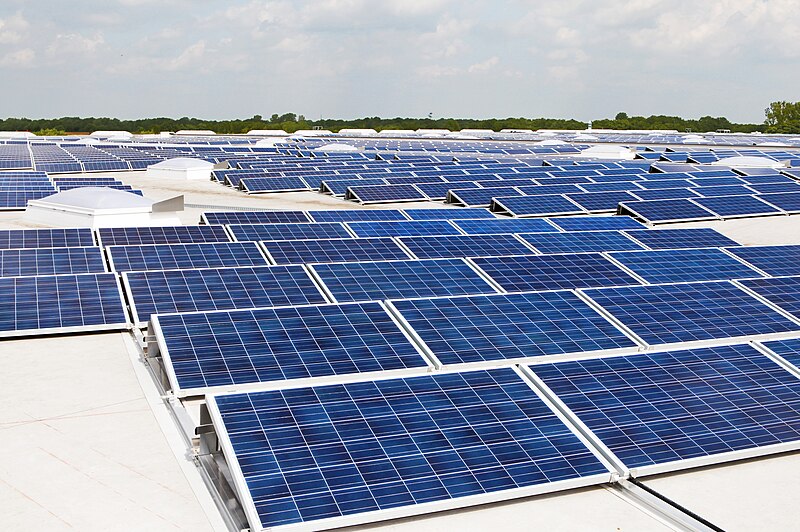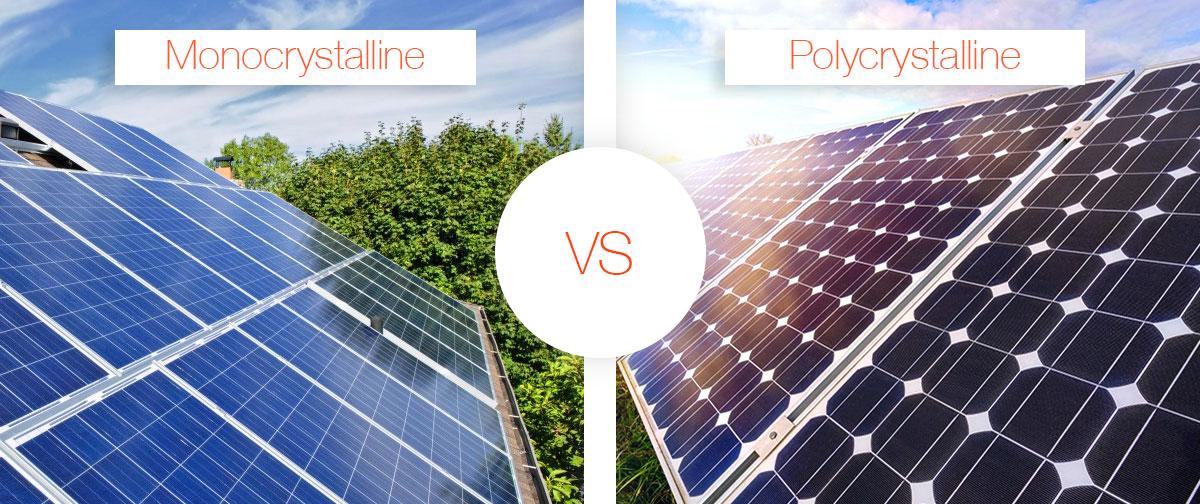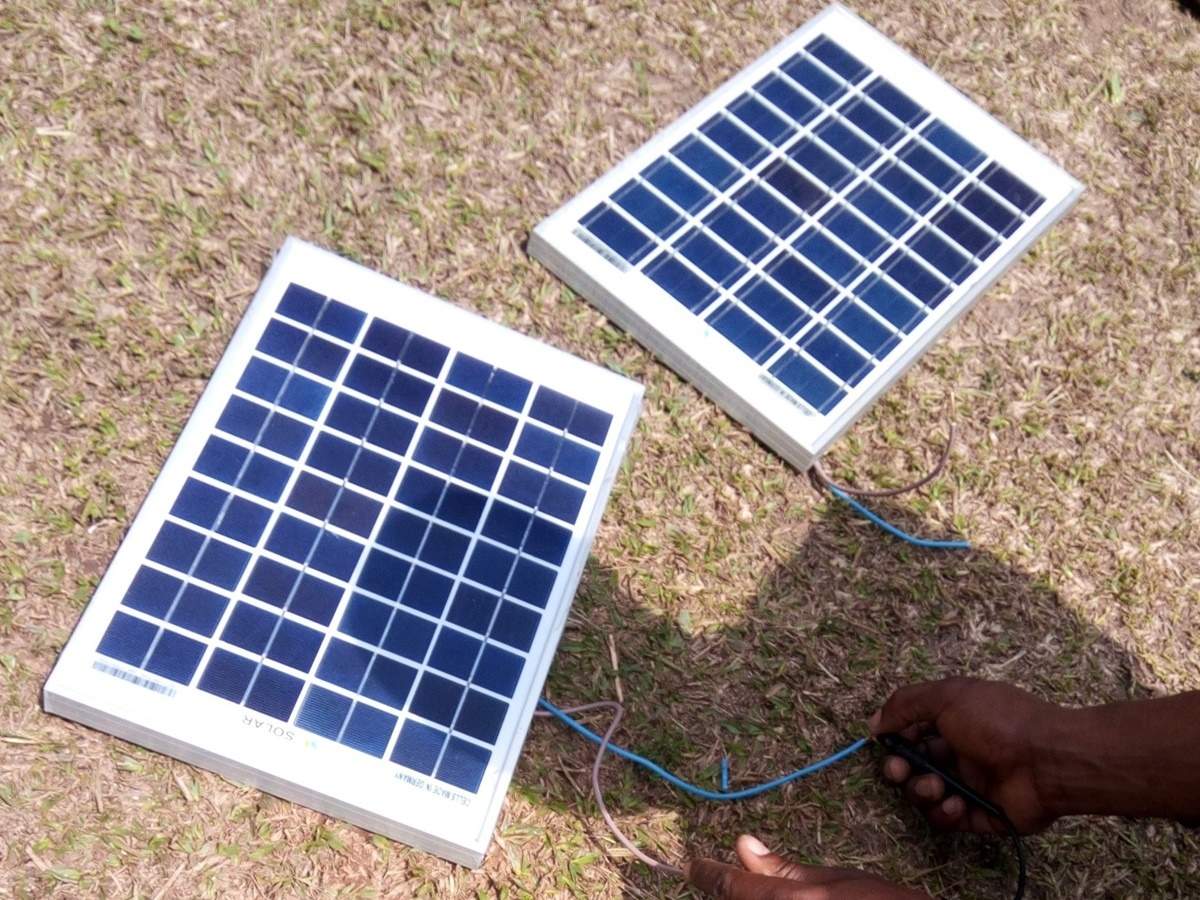Monocrystalline solar modules offer a higher efficiency of roughly 18%-22%, and these standard-sized mono-PV panels are capable of generating between around 400-450 watts per module – so they are suitable if you have limited space but want maximum power output. Productivity: More efficient (more expensive, $0.30-$0.45 per watt) with an excellent long-term ROI. As they are not as efficient, therefore the Polycrystalline modules range from 15%-17% efficiency and have a power output of 300-350 watts per module, so this is perfect for those customers who have low budgets. Prices around $0.20-$0.30 /watt for big solar farms
Efficiency Comparison
Monocrystalline solar modules are usually more efficient (18%-22%). A standard monocrystalline module (approximately 1.6 square meters) can generate around 400-450 watts in peak conditions. With monocrystalline material and better-quality silicon, they have fewer defects to impede electrons, so they reduce power loss. This signifies that monocrystalline modules are producing more power then polycrystalline in the same area. 30-40 monocrystalline modules will do it for many homes: enough to bring the daily power use of most Australian households online, producing between 5000 and 7000-kilowatt hours per year.
Less efficient than monocrystalline solar modules, polycrystalline solar modules usually run 15%–17%, with a test module hitting around the 300-watt to just over 350-watt range under standard conditions. While polycrystalline solar panels are not generally quite as efficient in terms of more expensive monocrystalline ones and won't thrive well up on your rooftop employed for power generation purposes, the upfront cost savings level things out with just about any good big photovoltaic systems. 10 to 12 polycrystalline modules might be required to produce approximately 1- KW: The power-generating capacity for users with low demand at around 4500 kWh/year -6000kwh /year.
Cost
The monocrystalline silicon module cost of production is also high, typically having a $0. Your run-of-the-mill 5-kilowatt monocrystalline system will set you back between $15,000 and $20,000 to install. Despite the high cost, since they are more effective and last longer with a higher power output can be mortgaged over time, improving return on investment.
Polycrystalline solar modules are less expensive to produce, generally ranging between $0.20 and $0.30 per watt of power capacity. Polycrystalline systems (5 kW installation) without feedback cost $10,000 – 15,000 and are more affordable in the first investment. This reduces the costs of these modules, making them more attractive among those on a budget or at large solar power plants where cost represents one major component.
Appearance
Monocrystalline solar modules are made of high-purity silicon, so the cells produced by this process usually show a very deep black. Monocrystalline modules look great on building rooftops; the sleek black design appeals to many aesthetic sensibilities while also providing razor-sharp performance. The most beautiful architecture is often achieved with residential rooftops, which accounts for the huge proportions of monocrystalline in the photovoltaics market.
Polycrystalline solar modules usually look blue, as well, and they have a somewhat irregular surface due to all the silicon crystals inside. Appearance is less nice looking than the monocrystalline modules, but it does not reflect any effect on their performance. In the case of large industrial or commercial scale projects where appearance is not a main concern, polycrystalline modules remain an economical option for many users.
Lifespan and Performance
Monocrystalline Solar Panels work for 25-30 years with proper maintenance. Monocrystalline 0.3%-0.5% annually; high-performance degradation for monocry Monocrystalline modules have a low-temperature coefficient at high temperatures, and the efficiency is reduced by only 0.35% per °C temperature rise so that they can deliver substantial performance under extreme climate conditions as well.
It is shorter than the monocrystalline module, with an expected 20-25 year lifespan. For polycrystalline modules, an average annual efficiency derating of 0.5%-0.7% can be observed from the beginning to the end of service life. Polycrystalline modules, on the other hand, can degrade by 0.5% per year, all things equal, and thus lose around 25% of efficiency over that same period, so down to about ~75%. The temperature coefficient is higher for the polycrystalline modules, reducing their efficiency by 0.45% to 0.50%, which means that they will have a lesser impact in high-temperature environments than monocrystallines do. In any case, for most applications, polycrystalline modules are still a dependable option.



